What’s It Weigh?
A comparative look at vehicle mass. The attention to weight certainly seems to be a common thread among OEMs.
#aluminum
Although mass is an issue that is addressed throughout the vehicle development chain, it is sometimes not evident just how things turn out vis-à-vis what the competitors are up to in the same category.
Here is a look at three categories of vehicles—midsize sedan, compact crossover, and muscle car—with close apples-to-apples trims. Two things stand out.
One is that when it comes to these vehicles, which are, with the exception of the pony cars, all volume plays, steel is the dominant material for the bodies. While there is an aluminum hood here or there, steel is primary. (Of course, were we to look at suspension setups, the story would be significantly different, particularly as unsprung weight is a huge consideration in that area of the vehicle.)
For the midsize sedans and compact crossovers the models are high trim level; for the performance cars, we opted for base as the number of variants of those vehicles is seemingly a geometric progression.
2020 Camry XLE
Structure: Steel body, aluminum hood
Engine/transmission: 203-hp, 2.5-liter I4; eight-speed automatic
Dimensions: 111.2-inch wheelbase; 192.7-inch length; 72.4-inch width; 56.9 inches height
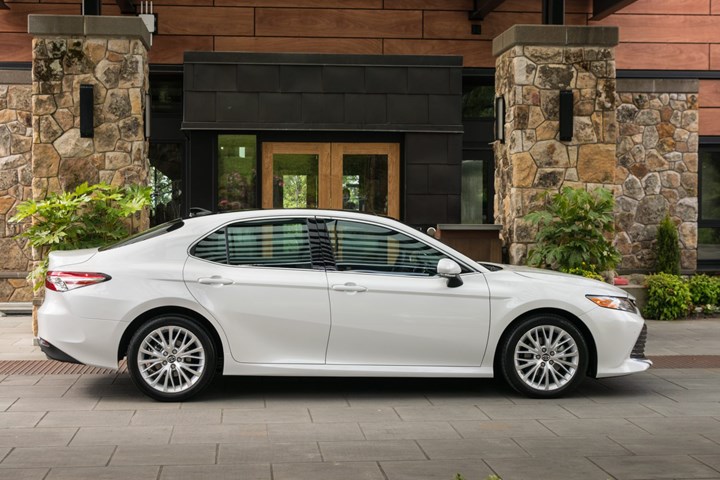
(Image: Toyota)
Curb weight: 3,351 pounds
2020 Accord Touring
Structure: Steel unibody
Engine/transmission: 252-hp, 2.0-liter turbocharged I4; 10-speed automatic
Dimensions: 111.4-inch wheelbase; 192.2-inch length; 73.3-inch width; 57.1-inch height
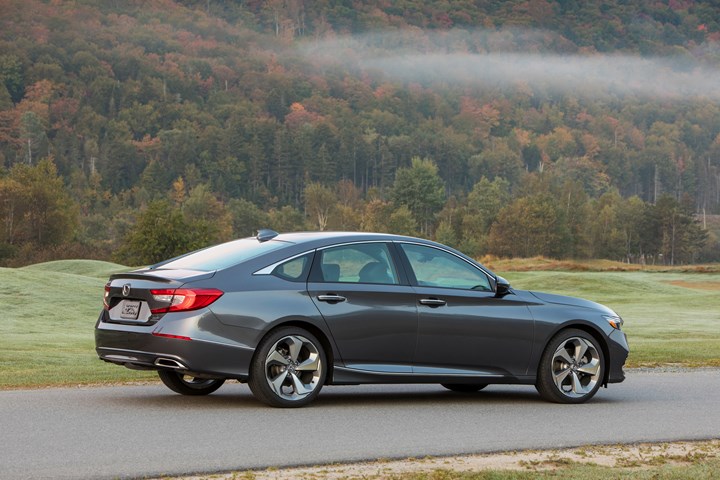
(Image: Honda)
Curb weight: 3,428 pounds
2020 Sonata Limited
Structure: Steel unibody
Engine/transmission: 180-hp, 1.6-liter turbocharged I4; eight-speed automatic
Dimensions: 111.8-inch wheelbase; 192.9-inch length; 73.2-inch width; 56.9-inch height
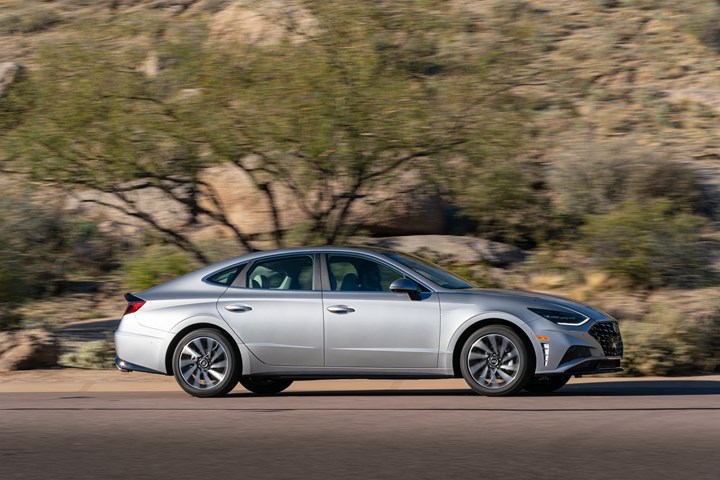
(Image: Hyundai)
Curb weight: 3,336 pounds
2020 Ford Escape Titanium
Structure: Steel unibody
Engine/transmission: 250 hp, 2.0-liter EcoBoost I4; eight-speed automatic
Dimensions: 106.7-inch wheelbase; 180.5-inch length; 74.1-inch width; 66.1-inch height
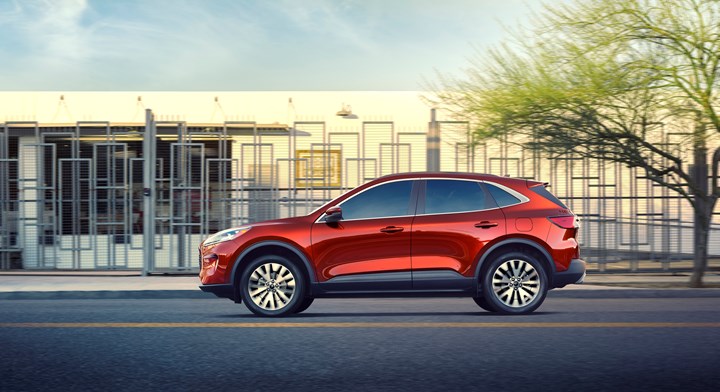
(Image: Ford)
Curb weight (AWD): 3,566 pounds
2020 Toyota RAV4 XLE
Structure: Steel unibody
Engine/transmission: 230-hp, 2.5-liter I4; eight-speed automatic
Dimensions: 105.9-in wheelbase; 180.9-inch length; 73-inch width; 67.2-inch height (w/antenna)
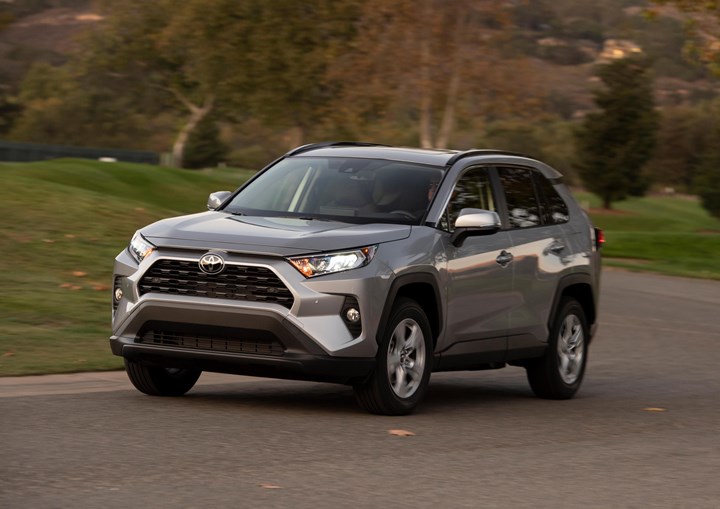
(Image: Toyota)
Curb weight (AWD): 3,490 pounds
2020 Honda CR-V Touring
Structure: Steel unibody
Engine/transmission: 190-hp, 1.5-liter turbocharged I4; continuously variable transmission
Dimensions: 104.8-in wheelbase; 182.1-inch length; 73-inch width; 66.1-inch height

(Image: Honda)
Curb weight (AWD): 3,569 pounds
2020 Mustang EcoBoost
Structure: Steel body, aluminum hood and front fenders
Engine/transmission: 310-hp, 2.3-liter DOHC, Ti-VCT turbocharged I4; six-speed manual
Dimensions: 107.1-inch wheelbase; 188.5-inch length; 75.4-inch width; 54.3-inch height
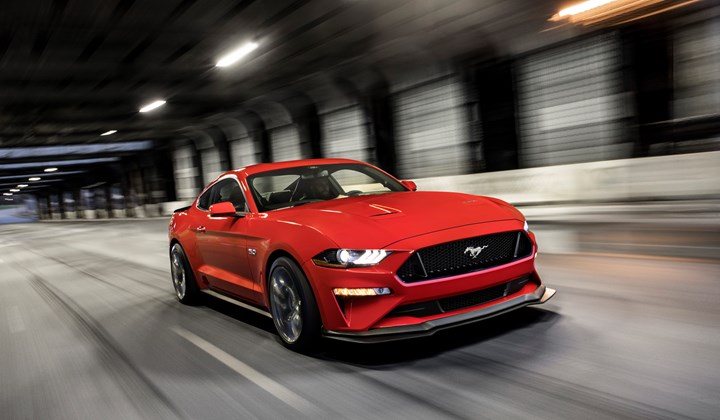
(Image: Ford)
Curb weight: 3,542 pounds
2020 Camaro LS
Structure: Steel unibody
Engine/transmission: 275-hp, 2.0-liter DOHC, VVT I4; six-speed manual
Dimensions: 110.7-inch wheelbase; 188.3-inch length; 74.7-inch width; 53.1-inch height
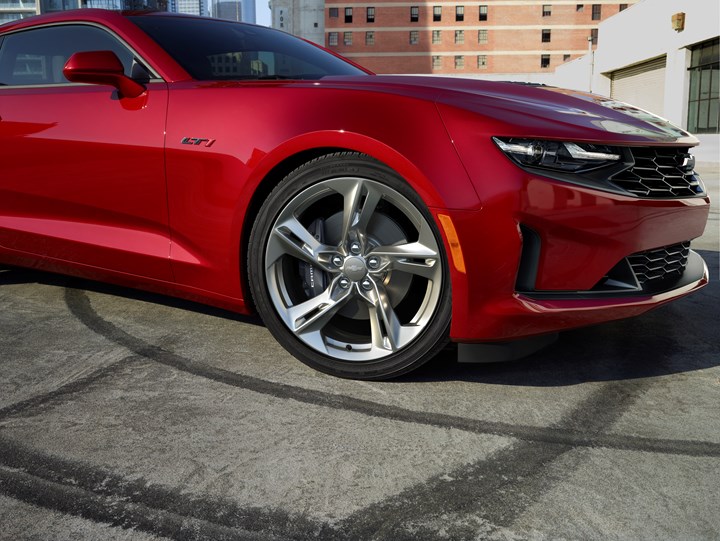
(Image: Chevrolet)
Curb weight: 3,351 pounds
2020 Dodge Challenger R/T
Structure: Steel unibody
Engine/transmission: 303-hp, 3.6-liter DOHC V6; six-speed manual
Dimensions: 116-inch wheelbase; 197.9-inch length; 75.7-inch width; 57.7-inch height
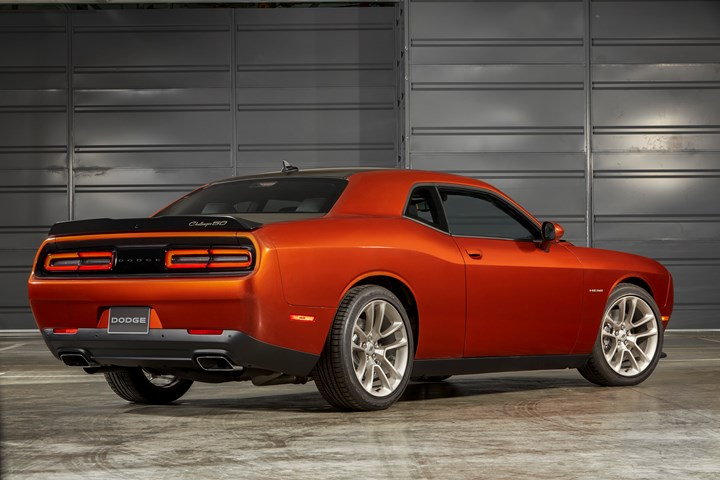
(Image: FCA)
Curb weight: 4,182 pounds
RELATED CONTENT
-
Jeeps Modified for Moab
On Easter morning in Moab, Utah, when the population of that exceedingly-hard-to-get-to town in one of the most beautiful settings on Earth has more than doubled, some people won’t be hunting for Easter eggs, but will be trying to get a good look at one of the vehicles six that Jeep has prepared for real-life, fast-feedback from the assembled at the annual Easter Jeep Safari.
-
The Bollinger B1: An Electric Sport Ute
The Bollinger Motors B1 has been revealed.
-
Increasing Use of Structural Adhesives in Automotive
Can you glue a car together? Frank Billotto of DuPont Transportation & Industrial discusses the major role structural adhesives can play in vehicle assembly.


.jpg;width=70;height=70;mode=crop)